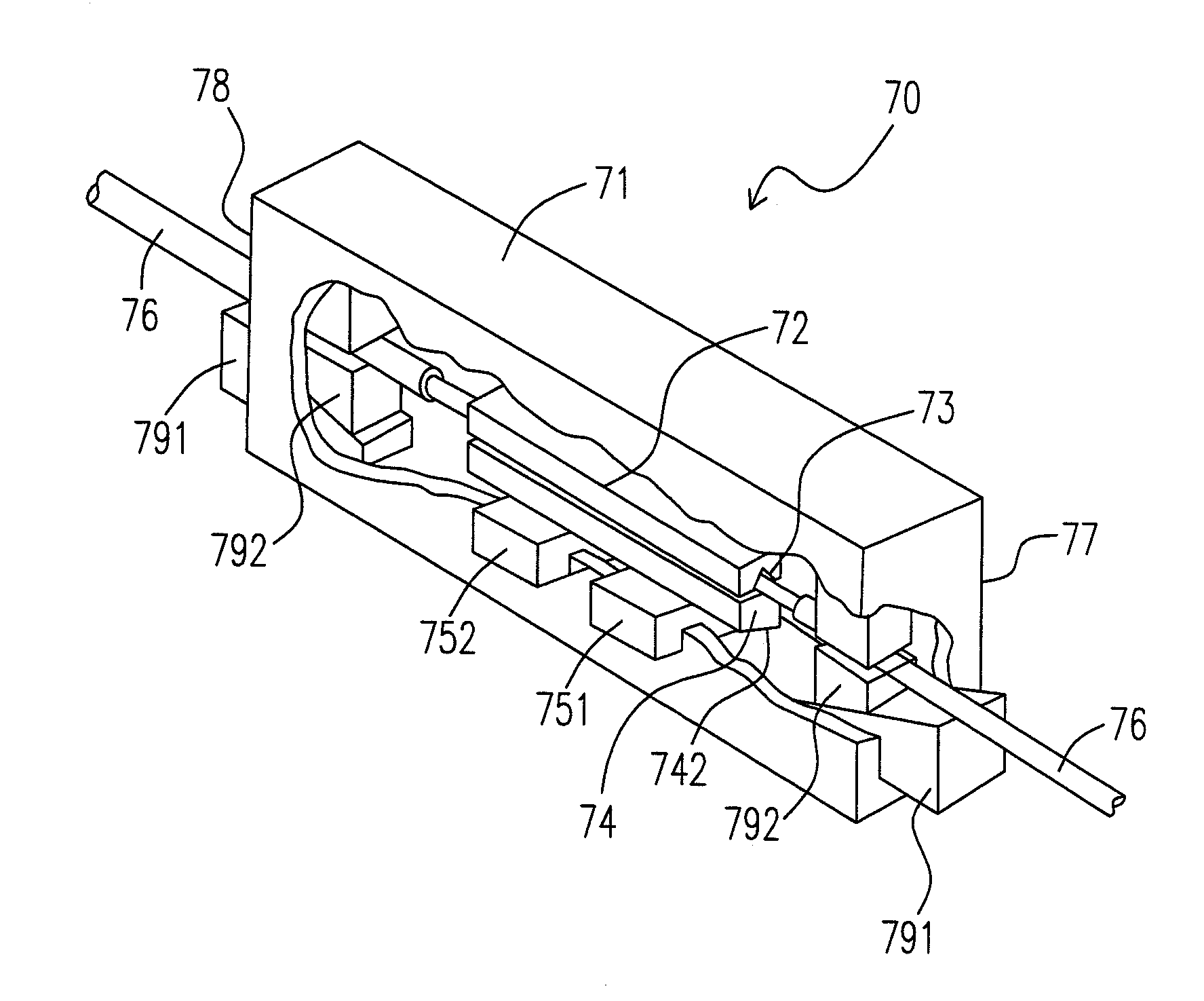Optical fiber mechanical wedge splice
- Summary
- Abstract
- Description
- Claims
- Application Information
AI Technical Summary
Benefits of technology
Problems solved by technology
Method used
Image
Examples
Embodiment Construction
[0033]Please refer to FIG. 7, which illustrates an wedge-type mechanical optical fiber splice 70, which includes a housing 71 which is a hollow block 71 having two openings for guiding optical fibers 76 at two opposite ends 77, 78; a V-grooved block 72 which is a first long strip block and one surface of the long strip block has a V groove 73; a pushing block 74, which is a second long strip block and preferably has a beveled surface or a slope 742, confronting to the V groove 73; and a first wedge 751 which is a block having an oblique angle. (A oblique angle is either a blunt angle or an acute angle, as defined in the field of Mathematics.) In other words, the first wedge 751 has a beveled surface or a slope (not shown) which is neither parallel nor perpendicular to the other surfaces of the first wedge 751, and the slope of the first wedge 751 fits with that of the pushing block 74.) Taking advantage of the mechanism of wedge, one may use the first wedge 751 to push the pushing b...
PUM
 Login to View More
Login to View More Abstract
Description
Claims
Application Information
 Login to View More
Login to View More - R&D
- Intellectual Property
- Life Sciences
- Materials
- Tech Scout
- Unparalleled Data Quality
- Higher Quality Content
- 60% Fewer Hallucinations
Browse by: Latest US Patents, China's latest patents, Technical Efficacy Thesaurus, Application Domain, Technology Topic, Popular Technical Reports.
© 2025 PatSnap. All rights reserved.Legal|Privacy policy|Modern Slavery Act Transparency Statement|Sitemap|About US| Contact US: help@patsnap.com



